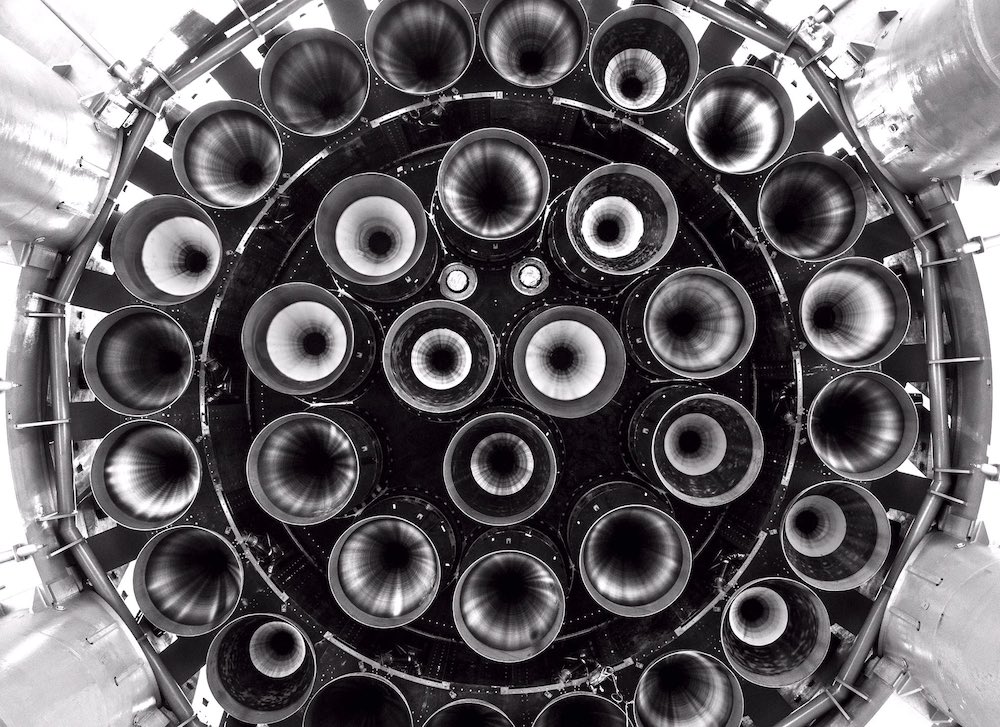SpaceX has shared an image (below) showing the 33 Raptor engines installed at the base of its next-generation Super Heavy rocket as the company carries out final work for the booster’s first orbital flight.
The Super Heavy rocket will be the most powerful space vehicle ever launched when it gets off the ground, and is destined to one day carry astronauts toward the moon and possibly even Mars.
A second image (below) shows the six Raptor engines on the Starship spacecraft that will ride atop the Super Heavy when it blasts into space. When it separates from the Super Heavy, the spacecraft is capable of independent flight and can even land upright on the ground, whether on Earth or another celestial body such as the moon.
33 Raptor engines installed on the Booster, 6 on the Ship pic.twitter.com/l7K6rH96qa
— SpaceX (@SpaceX) July 2, 2022
SpaceX boss Elon Musk said a couple of weeks ago that the Super Heavy booster and Starship spacecraft — collectively known as the Starship — will be ready for its first orbital test flight later this month.
SpaceX recently cleared a major hurdle after a Federal Aviation Administration (FAA) report concluded there were no major issues preventing the company from using its Starbase facility in Boca Chica, Texas, for orbital launches. However, the FAA published a list of measures and assurances that SpaceX needs to sort out ahead of the of the Starship’s highly anticipated maiden mission.
The rocket is currently on the Starbase launchpad awaiting a crucial static fire test to ensure the engines and other systems are working properly for the test flight.
The 394-foot-tall Super Heavy is capable of 17 million pounds of thrust, more than twice that of the Saturn V rocket that powered astronauts toward the moon, and considerably more than the 8.8 million pounds of thrust offered by NASA’s next-generation SLS rocket, which could also take its first orbital flight later this month.
A successful orbital mission for the Starship would be a major boost for SpaceX and NASA, which wants to build lunar bases for long-term astronaut missions as part of the Artemis program, which also has crewed missions to Mars in its sights.
Editors’ Recommendations

